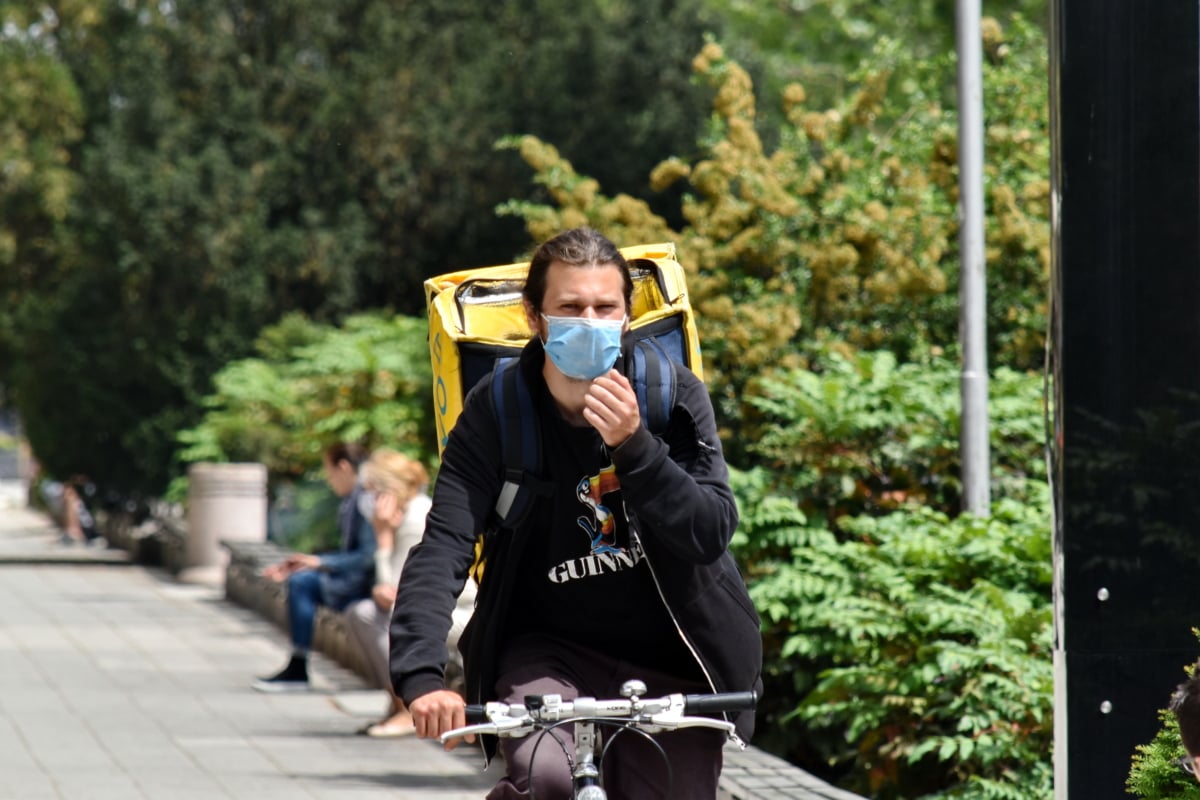The coronavirus pandemic has altered the focus of collective actions taken by tech workers and, for many, the tools they use to organize.
Data for this article is taken from the Collective Action in Tech database. At the time of writing, there are a total of 107 recorded actions in 2020, of which 43 were related to the coronavirus. The graphs and analysis produced below are based on these 107 data points.

Timeline of collective actions tagged `coronavirus`.
The majority of the coronavirus-related actions occurred between March and May of 2020, around the same time various states began implementing stay-at-home and social distancing measures.
One of the earliest events was the Gig Workers Rising petition launched in early March calling on some of the biggest gig economy platforms to give workers paid sick leave. The workers argued that they were on the front lines of exposure and that lack of paid sick leave meant they had to choose work over quarantine, increasing the chances of customers becoming infected.
On May 1st, also known as International Workers’ Day, employees from Amazon, Whole Foods, Instacart, Target, and Shipt walked off the job to protest their employers’ responses to the Covid-19 crisis.
Organizers for both of these actions said they were protesting working conditions that failed to prioritize the health of workers.
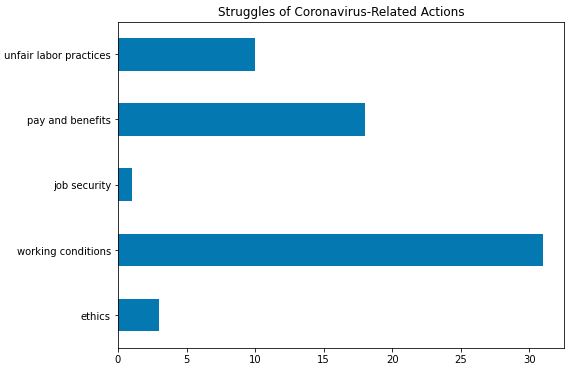
Struggles motivating coronavirus-related actions.
Working conditions were the impetus behind the majority of coronavirus-related actions, with pay and benefits and unfair labor practices as secondary reasons. In previous years, ethics was the dominant reason for collective action and unfair labor practices only constituted a minority of actions taken.
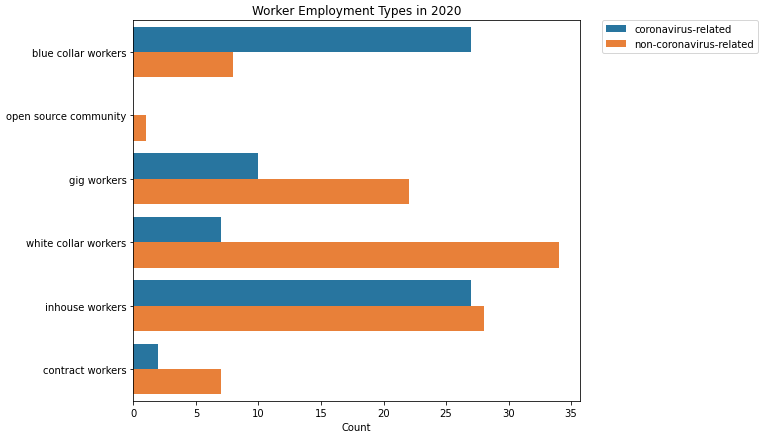
Number of Occurrences by Employment Types of those Involved — filtered by coronavirus-related (top) and non-coronavirus-related (bottom).
There was also a noticeable shift in the types of workers involved. Coronavirus-related actions were mostly organized by in-house workers and blue-collar workers (such as Amazon warehouse workers). Non-coronavirus-related actions from the same time period were more likely to be organized by white-collar workers.
Once the scale of the pandemic was recognized in the U.S., white-collar workers shifted to working from home. Google implemented work-from-home starting in March 2020 and has since extended this to June 2021, along with a number of other major tech companies. By contrast, warehouse workers for Amazon were required to continue to report for work. Only employees who tested positive for the virus were given two weeks of paid sick leave.
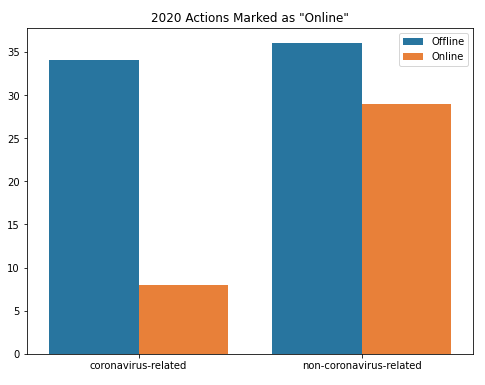
Our data indicates that the majority of coronavirus-related actions occurred in-person. In fact, the proportion of online actions with the coronavirus label is much lower than those without the coronavirus label. Approximately half of the non-coronavirus-related actions were online, while more than 80% of coronavirus-related actions were in-person.
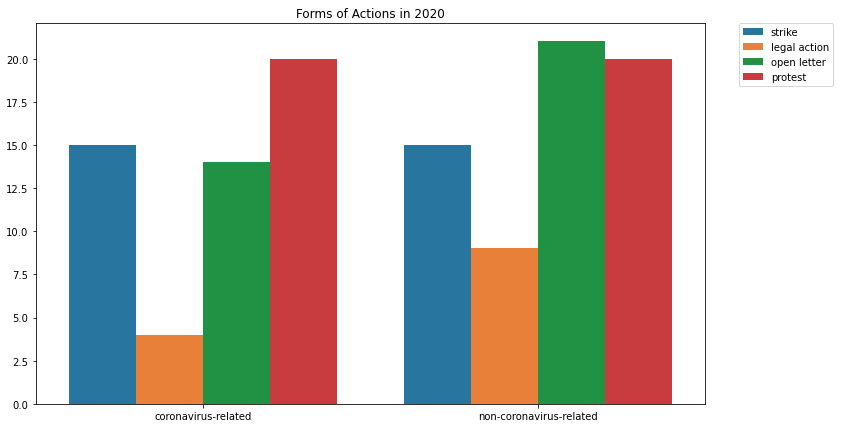
Forms of Actions in 2020 — filtered by coronavirus-related and non-coronavirus-related. (Union organizing actions excluded.)
This is further illustrated by the forms the actions have taken. Strikes and protests dominated with open letters as a close second. For non-coronavirus-related actions, open letters were by far the most popular form of movement.
Why were actions protesting the lack of protection against coronavirus taking place in-person? One possible reason is that since the workers were heading to work in “unsafe” conditions in the first place, an additional in-person strike or protest would not significantly increase their risks of catching the virus.
The coronavirus pandemic has impacted tech worker activism, impacting both the means workers use to organize and their motivations for doing so. Unfair labor practices have been brought into the spotlight by essential workers fighting for adequate protections against coronavirus. For actions motivated by reasons other than the pandemic, we are seeing more organizing online than ever before. As work-from-home arrangements continue for some workers into 2021, it will be interesting to see if this trend continues.
Link to the Jupyter Notebook: https://github.com/collective-action/tech/blob/master/analysis/Covid-19%20Visualizations.ipynb
Ewen Dai, Summer Researcher @ Collective Actions in Tech. Currently a senior at UC Berkeley studying Data Science & Statistics.
-
This author does not have any more posts.
